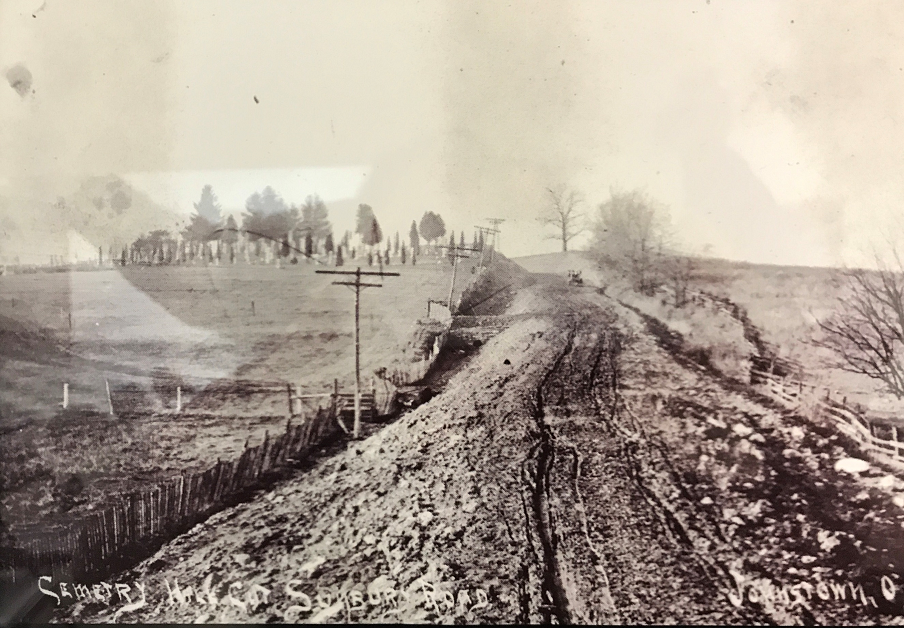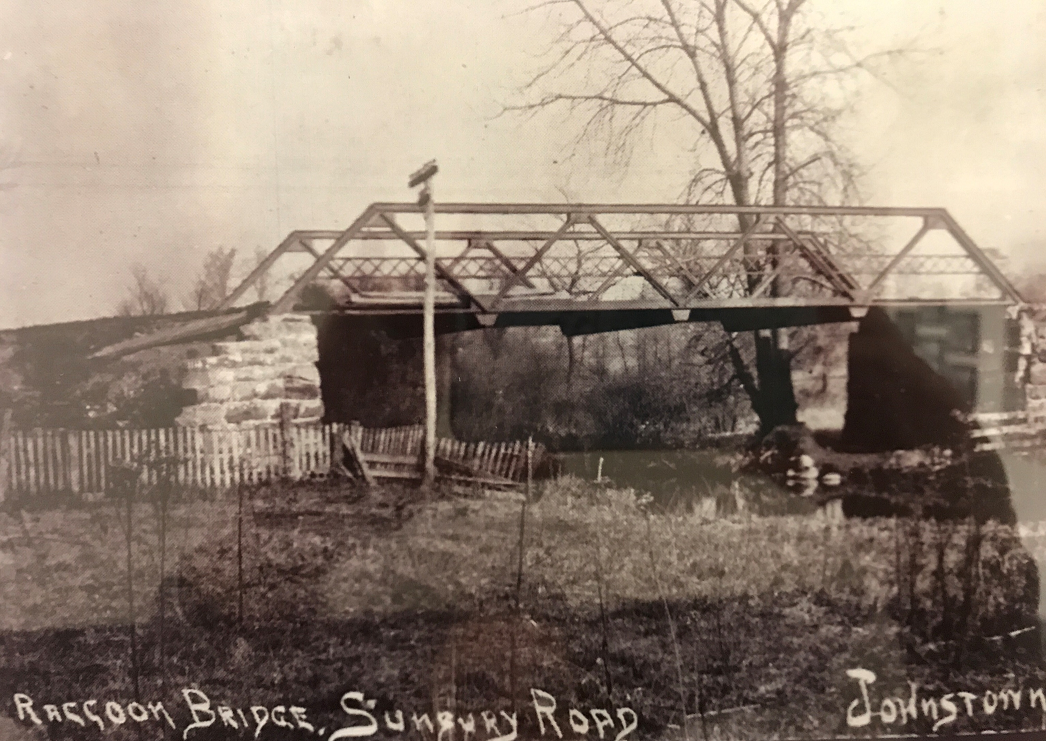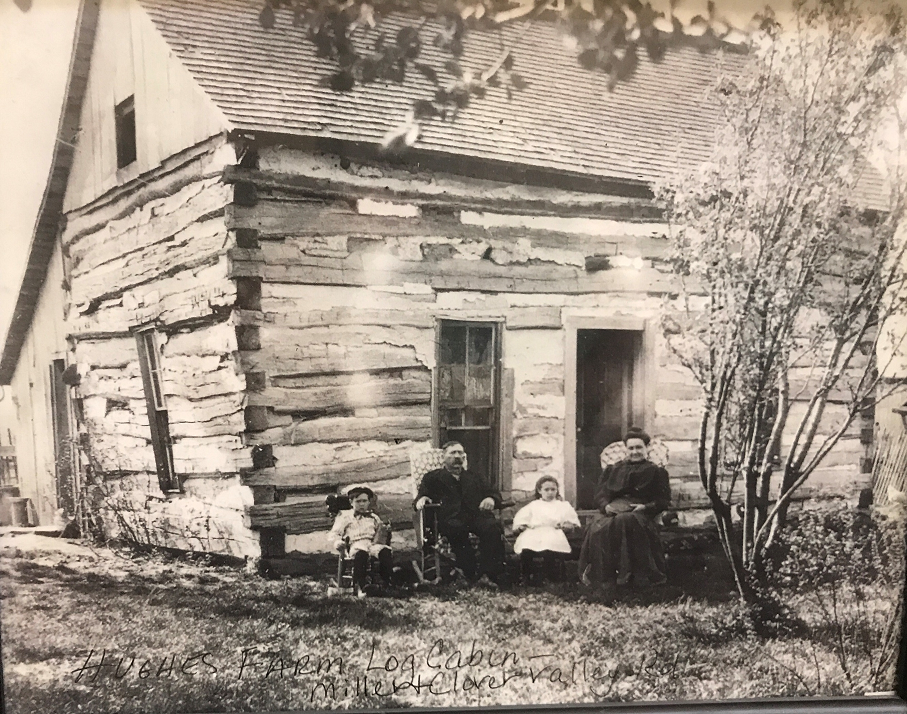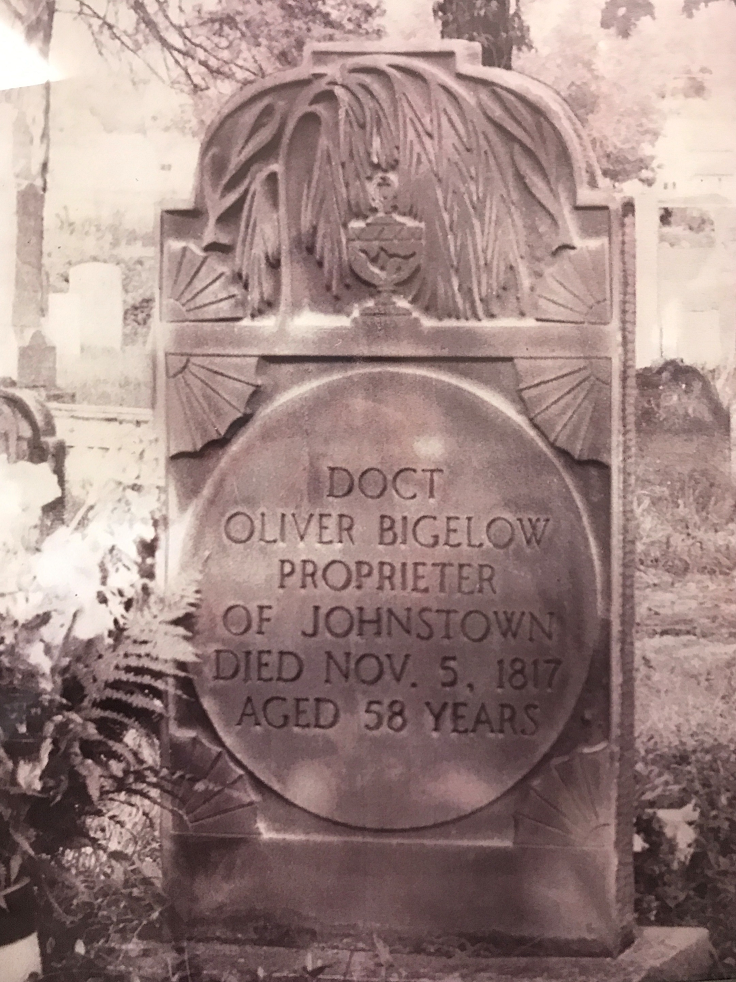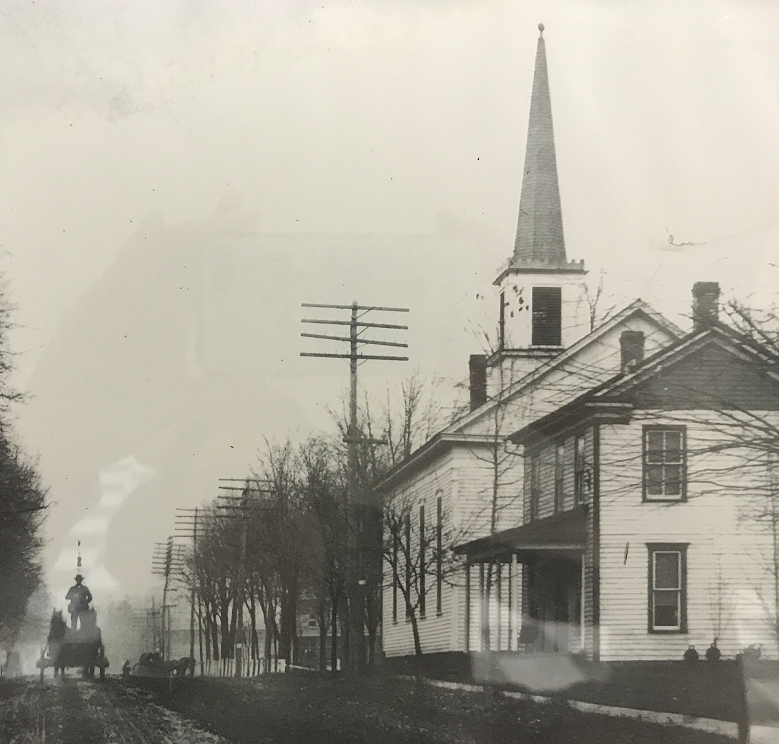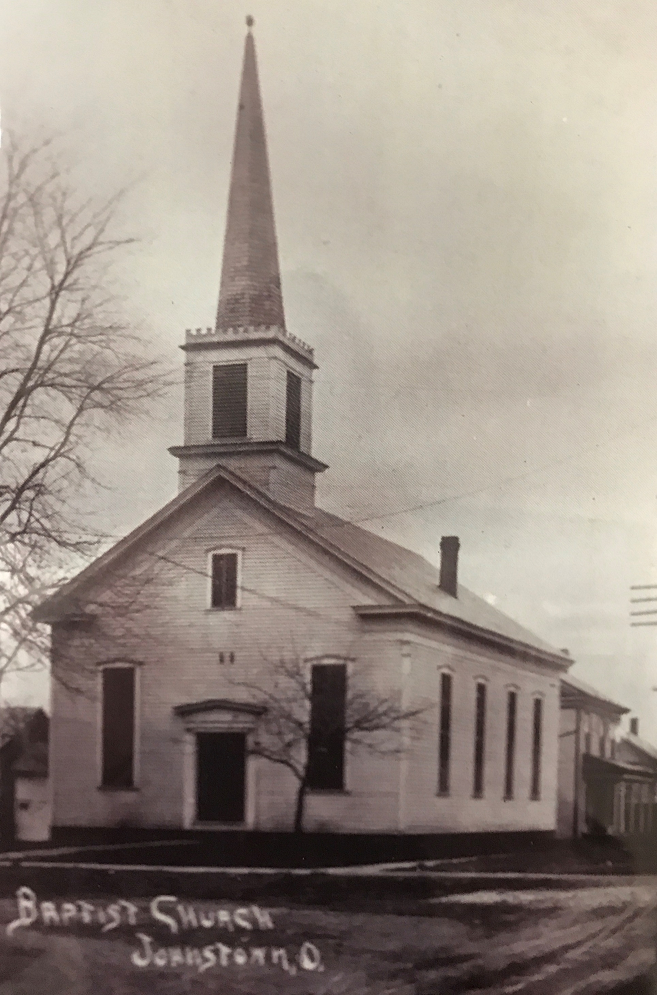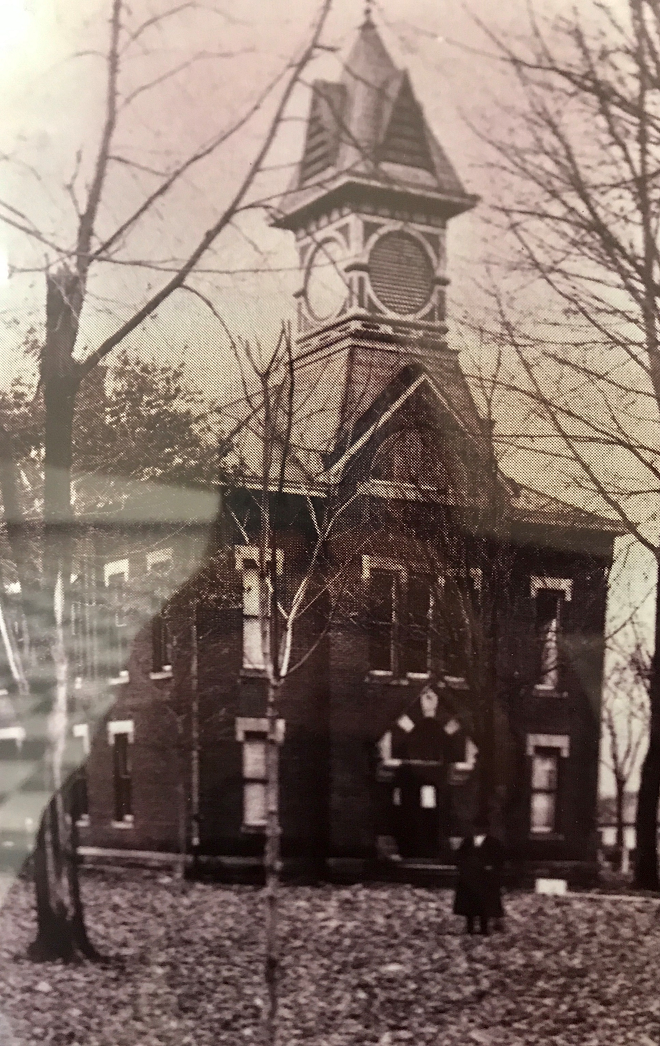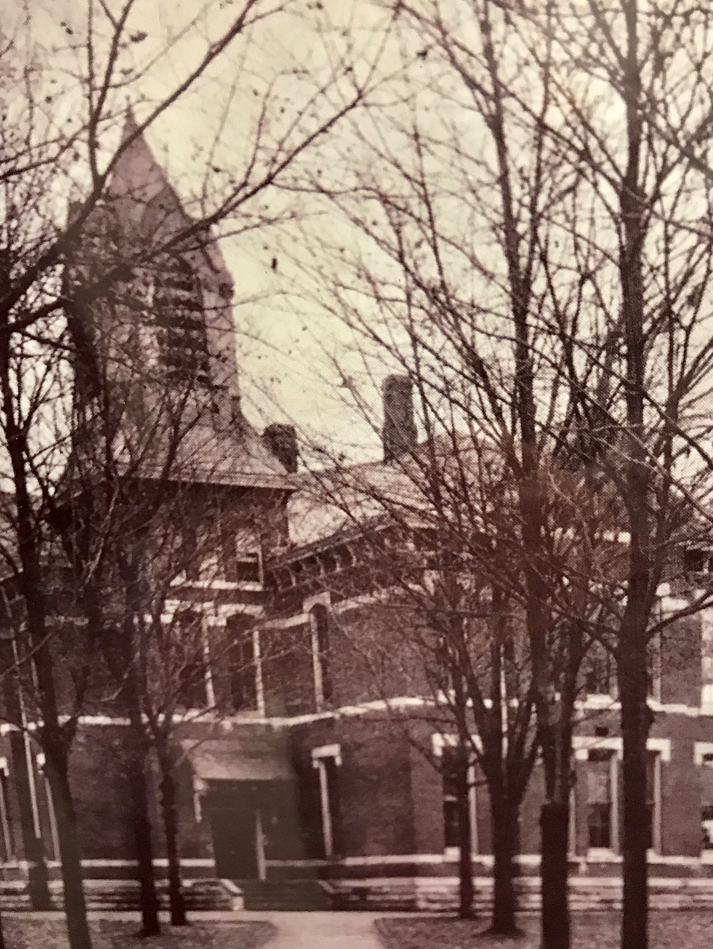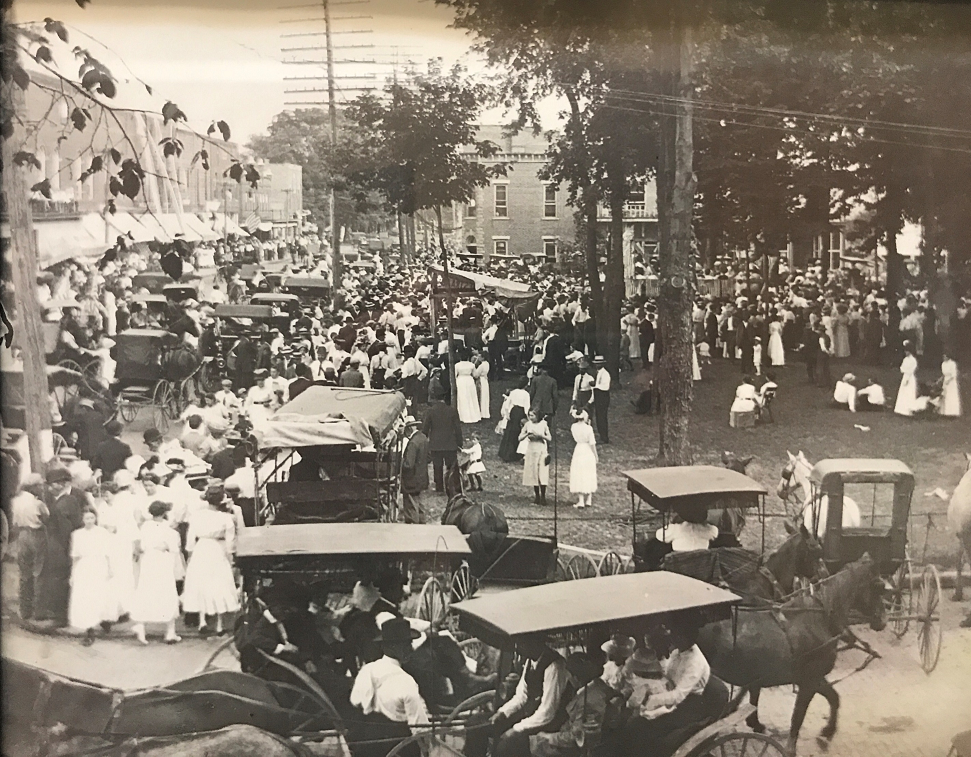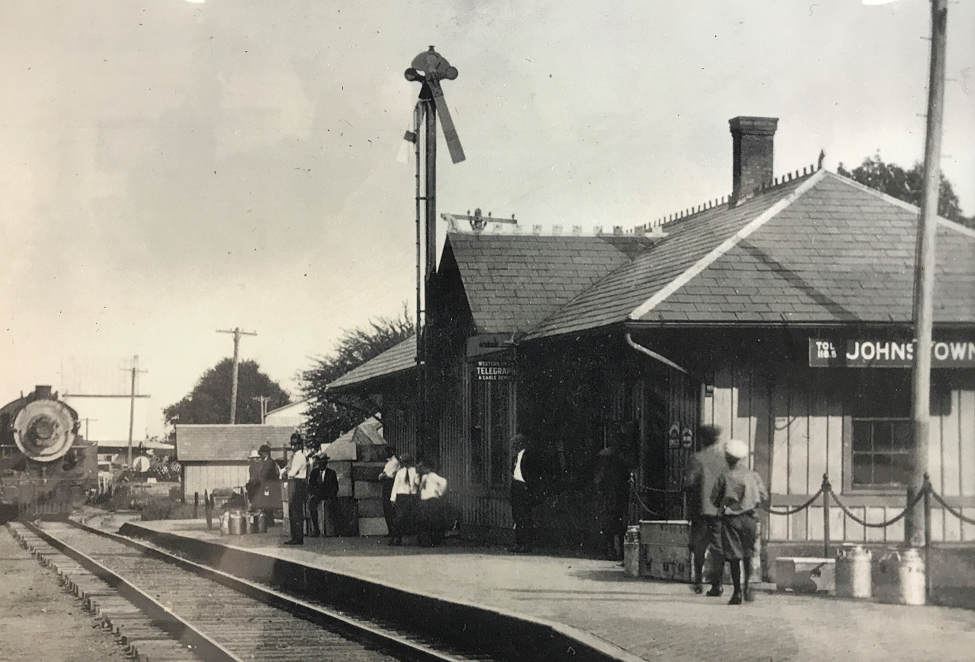Monroe Township History
Monroe Township Today
Monroe Township enjoys the services of the Mary E. Babcock Library, which is a branch of the Newark Public Library System. It moved into a new building on February 13, 2006 after a community campaign that began in 2003. It was formerly in the back of the Town Hall. The new building is at 320 North Main Street.
The T. J. Evans Bike Trail comes into Johnstown from Newark, via Granville and Alexandria. The General Miles Land Trust is a 176-acre tract that was set aside for the “religious and social benefit” of the township and is never to be developed. Morris Woods contains 104 acres as a wildlife sanctuary and is owned and managed by the Ohio Department of Natural Resources. The public square of Johnstown is called Bigelow Park and was set aside in 1813 by the town’s founder, Dr. Oliver Bigelow. It holds the Town Hall, the Opera House, and open space for the community including a gazebo and shade trees. The park yard and the gazebo were refurbished in 2019.
There are 21.99 miles of roads that are maintained by Monroe Township. Trustees meet at the Township Complex, 7621 Johnstown-
Alexandria Road in Johnstown.
Fire protection and emergency medical service for the township are provided by the Monroe Township Fire Department, which also holds mutual aid agreements with surrounding departments. Ground will be broken for a new Fire Department in Johnstown in 2020.
Primary law enforcement in the township comes from the Licking County Sheriff’s Office, with some additional assistance from the Ohio State Highway Patrol.
Township Timeline
Before 1807
NATIVES
The only remains from the Moundbuilders, according to Mills, was one mound and one village site, both southeast of Johnstown near the Liberty Township line.
In later times, the Wyandot nation had a sizeable town just north of Johnstown at the edge of present-day Green Hill Cemetery, called Raccoon Town. They lived there until around 1807 when their land was purchased by Charles and George Green. Wyandot people remained in Monroe and the surrounding townships of McKean and Granville until we entered war with Britain again in 1812. Settlers often found the image of the turtle carved on the trees, which represented the Wyandot nation. They were thought to be the most “civilized” and “Christianized” tribe.
1815
Settlers
The first settlers in Monroe Township were George Washington Evans and his wife Lucy, from Green County, Pennsylvania. They came in 1806. Also arriving in 1806 were Charles and George Green, but they did not bring their wives until 1807. The first white child born in the township was Mahala Green, daughter of George and Diana Green. This was the Fall of 1807. Mahala later married Bazil Butt. Mrs. George Green had seventeen children, one hundred grandchildren, seventy great grandchildren and several great great grandchildren. She lived to be over ninety. Other early settlers were the Steinmetz Family, Elisha Willison, Jacob Barker, N. Alden, Henry Hoover, and William Sellars.
The first marriages in the township were between Ned Hatfield and Miss Timants and Regnal Green to Sarah Willison. Moses Foster was the first Justice of the Peace and Dr. S. A. Bigelow was the second. The first Constable was C. I. Graves.
Monroe Township was organized in 1812 and consisted of the entire northeastern corner of Licking County, which included the present-day townships of Bennington, Hartford, Liberty, and Monroe. In 1815, a line was drawn through the center from east to west, and the northern half became Bennington Township. Hartford was separated in 1819, and Liberty Township was created from the eastern half of Monroe Township in 1827. Before 1812, Monroe was part of Granville Township.
As early as 1818, the population of the township was 591. A sawmill owned by George Hoover cut 30,000 feet of wood that year, and a grist mill owned by James Mullen ground 1,000 bushels of wheat, 3,000 bushels of corn, and 100 bushels of barley. Distilleries, owned by Lennell and Orput and Eli Downing, made 5,700 gallons of whiskey, none of which were exported out of the area.
1823
People
We cannot discuss Monroe Township and Johnstown without reviewing the Ashbrook Family. Reverend Eli Ashbrook was born in Hampshire County, Virginia in 1781. He moved to Fairfield County, Ohio in 1810 and then to Monroe Township in 1823. He was one of the early ministers of the Monroe Baptist Church. He and his wife, Caty Peters, had seven sons and seven daughters. One son was William, who married Lucy Pratt. A son of William was B. G. Ashbrook, who bought the Johnstown Independent newspaper in 1884. When B. G. died in 1885, his brother, William A. Ashbrook, took it over at the age of 17. William also became the postmaster of Johnstown while Grover Cleveland was President. He was elected as the Licking County Representative to the Ohio Legislature in 1905. He resigned from that in 1906 to take a seat with the U. S. Congress, where he served for fourteen years. After a fourteen-year break, he was again elected to Congress in 1934, 1936, and 1938. Among his many accomplishments was gaining funding for the Newark Post Office. He was also a sponsor for the Arlington National Cemetery Memorial. He died at home during his term on January 1, 1940. His son, John M. Ashbrook, was born September 21, 1928. He became an attorney and also ran the Johnstown Independent newspaper. He was a State Representative and U.S. Congressman for 21 years. He, too, died while in office on April 24, 1982. His wife, Jean, was elected to replace him in Congress.
Mrs. Frederick (Fae) Neely holds the distinction of being the first woman Mayor within Licking County. She was Mayor of Johnstown in the 1960’s.
Mrs. Sandra Lee Vasu-Sarver was the first woman to become a Superintendent of schools in Licking County.
Major Eli Pratt was considered by many to be the most prominent citizen of early Johnstown. He gave financial support for a grist mill, the railroad and religious matters of Johnstown, and also served a term as Mayor.
Other biographies in Hill’s history include Reverend Eli Ashbrook, William Ashbrook, Hiram M. Ashbrook, T. M. Barnum, Stephan E. Bell, H. S. Biedler, John Blamer, Linley Bottenfield, Mahala Butt, Susan Clouse, Clinton Derthick, Hugh Ford, William H. Ford, Truman B. French, Noah Green, Winfield Scott Harding, John B. Hodges, Daniel Kasson, Royal Kasson, George W. Lewis, James McInturf, Diodate Morgan, William Paige, Israel H. Peck, Joel Philbrick, Eli Pratt, Alpheus Reed, Henry B. Rusler, A. K. Sanford, William Sanford, John Smith Sr., David W. Stearns, John E. Thrapp, J. D. Thompson, Thomas Trippet, Truman W. Varian, A. Williams, and James N. Wright.
1863
Schools
The first school in Johnstown was held in what was called the “Shakespeare House”.
The one room schools were Baker, Blue Jay No. 1, Blue Jay No. 2, Clark, Conway, County Line, Hill, Miller, and White. Baker School was on the northeast corner of Croton and Woodhaven Roads. It no longer exists.
Blue Jay was on the southeast corner of Woodhaven and Jacob White Roads. It was moved later and became a granary. A new one was built at the first site and it was called Blue Jay No. 2. It was burned by the Croton Egg Farm.
Clark School was on the north side of Edwards Road, about three-quarters of a mile east of County Line Road. It burned down in the late 1970’s and was located on Tom Hendren’s farm.
Conway School was on the west side of Mink Road, a short distance north of Duncan Plains Road. It is now a home.
County Line was on the east side of County Line Road, north of Fancher Road. It was moved across the road into Delaware County at some point and is now a home.
Hill School was on the south side of State Route 37, where Downing Road intersects it. It, too, is now a home and it still standing.
Miller School was at the intersection of State Route 62 and Miller Church Road. It burned down during the school year of 1927.
White School was at the northwest corner of State Route 37 and Clover Valley Road. It was later used as a Grange Hall, and now as a Church, which is still in use.
Other known schools were the Kaw School, which was a meeting place for the United Brethren in Christ Church in 1863, the Green School, which appears on a 1932 county map, and the Taylor School, which was at the northeast corner of Croton and Woodhaven Roads.
In 1884, a brick school building was built on College Avenue in Johnstown. It received an addition in 1912. By 1924, it had an enrollment of 350 students with ten teachers. A high school was built in 1928 at a cost of $125,000. This became the present Willis C. Adams Middle School when a new high school was built in 1965. The Middle School was demolished in 2019.
Cornell School, which was moved to Johnstown in 1991 to use as a History laboratory for students, was originally in St. Albans Township. It was established in 1886.
In 2018, the new Johnstown Monroe High School opened, as well as, a new Elementary School.
1808
Villages
Johnstown was part of a 4,000-acre tract deeded to John Brown of Kentucky by President John Adams for military service during the Revolutionary War. The deed was dated April 2, 1808. On December 7, 1810, Brown sold the land to Dr. Oliver Bigelow of New York for $10,000. Bigelow came here in 1811, laid out the Village in 1813, and became its Mayor in 1815. He probably got its name from Johnstown, New York, which was believed to be his original residence. He died on November 5, 1817 and was buried in the Bigelow/Johnstown/Old Cemetery inside the Village. His tombstone reads, “Dr. Oliver Bigelow, proprietor of Johnstown”.
A post office opened on August 31, 1816 with Noble Landon as postmaster. Following him in the position were Peter Stevens, Henry Tassett, George Hoover, Levi H. Drake, Charles Follett, and William W. Fisher.
New counties were formed by the Ohio Legislature between 1845 – 1850, and Johnstown was proposed by some to become the new county seat of one of these counties. Its efforts were not strong enough, however, and Mt. Gilead was selected instead. Johnstown remained a very small village from the start, not surpassing a population of 250 until the 1880 census. Then the railroad rolled through the village on July 4, 1880, and its growth began. Elizah Barton erected the Town Hall during 1883 – 1884 and the Johnstown Bank was organized in 1883. A modern sewage system was installed in the 1930’s.
The Johnstown Town Hall was dedicated in 1885. It also served as the Opera House, which is now on the National Register of Historic Places. The Town Hall is now the home of the Johnstown Historical Society and museum. The fire department resides in the building with a separate entrance. The Johnstown branch of the Newark Public Library was in the back part of the building until the Mary E. Babcock Library was opened in 2006.
William Jennings Bryant once spoke at the Opera House when he was running for President against McKinley. High School students held graduation ceremonies in the Opera House from 1885 to 1918.
Also, on the Register of Historic Places is the old jail, which can be toured. It was built in 1889 with walls a foot thick. It was moved to its present location soon after 1900 and used for a short time to house stray animals until their owners could be found.
1819
Churches
The first religious denomination to organize in Monroe Township was the Baptist. The Monroe Baptist Church was organized in 1819, approximately one mile north of Johnstown. This was founded by Reverend George Evans. Original members included Jacob Baker, Richard Orpret, Washington Evans and wife, M. Hoover, John Clark, and Abram Barlow. In 1830, they built a brick church at the cost of $600. One of the early ministers was Reverend Eli Ashbrook, who served for five years.
The Methodist Episcopal Church of Johnstown was founded by Russel Bigelow in 1820. At that time, he had charge of the Columbus Circuit. The first members were George and Regnal Green, and Charles Green and his wife. The organizational meeting was held at Peter Stephen’s tavern and they met at members’ homes for five years until the church was built.
Another Methodist Episcopal Church was the Monroe Chapel, organized in 1837, by Uriah Heath. Its first members were Joseph B. Crawmer, John Robinson, Henry Beckathorn, Thomas Leitew, William Miller, and Mr. Cole. They built a church in 1840.
The First Presbyterian Church of Johnstown was founded by Joseph Matthews on July 15, 1837. Some of its first members were David Conway, John Follett, and Henry LeDue.
The Baptist Church of Johnstown was organized under F. R. Freeman in 1839. Its original members were William Beers, Eli Pratt, James Hoover, Simon DeWolf, John Clark, Julius Freeman, John French, William Gisesell, Mary Peck, Irene Baker, Eva Violet, Lucy Morgan, Anna Crosby, Betsey Morgan, Elizabeth Dolph, Lavina Beers, Rebecca Best, Mary Clark, Minerva Hoover, Mary Downing, Rachel Phillips, Barbara Shoemaker, and Annetta Baker. They built a church in 1869 for $4,000.
The United Brethren in Christ Church was organized in 1863 by Reverend William McDaniels, assisted by Silas Priest, Benjamin Clouse, Benjamin Green, Joseph Smith, and Elisha Green. Their first services were held at the Kaw Schoolhouse. They built a church in 1866 at a cost of $1,100.
Two other churches noted on old county maps were Eden Church and Green Chapel. The latter was at the northeast corner of Green Chapel and Clover Valley Road.
1884
Newspaper: The Johnstown Independent
The Honorable E. N. Gunsaulus established the Johnstown Independent newspaper in May 1884 and ran it until the following February when he sold it to B. G. Ashbrook. Ashbrook became ill soon afterward and never really ran the paper himself. He died on May 5, 1885 and his seventeen-year-old brother, William A. Ashbrook, took it over as editor and proprietor for the next 24 years, during which time he also entered politics and became a Representative in Congress. Some of his partners were A. Q. Beem in 1886, E. A. Pratt in 1888, H. L. Johnson in 1902, and probably F. J. Neely at some point. In 1912, the company was called Ashbrook, Johnson & Neely.
1926
Mastodon and Moose
In August 1926, Friend Butt found two dead hogs on his farm and called in his tenant, James Bailey, and his twelve-year-old nephew, Charles Lake, to help him bury them. Their shovels hit something hard, so they buried them in another spot. Then they went back to the first spot to dig more and uncovered a tusk. After that, they dug by hand and realized the tusk was still attached to the skill. On August 24, a derrick was used to remove the whole skeleton because the skull weighed 450 pounds. One tooth weighted almost five pounds. They kept working until all parts were removed, treating each part to preserve it. The hip bones were five feet, eight and a half inches from tip to tip and were four feet across.
Experts from The Ohio State University were contacted. Scientists differed on the age of the skeleton, ranging from 8,000 to 30,000 years. Either way, once the word “mastodon” hit the newspaper, folks drove from all over Ohio and other states to see it. Thousands of people poured in, paying $.25 each, to see the bones. C. A. Benedict was given the photo rights, so no other photographs were allowed. The Ohio Archeological and Historical Society offered Mr. Butt $1,000 for the skeleton, but he had made more money than that in parking fees in three days, so he refused the offer. It was owned by several people before finally finding a home in the Cleveland Museum of Natural History. A path and a viewing area has been added to the site of the mastodon discovery.
In 1985, Dave and Kay Currens uncovered a skeleton while excavating for a pond on Mink Road. It turned out to be from an ancient moose, dating between 10,000 to 14,000 years old, which became extinct during the last Ice Age. This one had died in a former swamp or peat bog. The Ohio Historical Society came to identify and preserve the bones.
GHOST TOWNS AND OTHER NEARLY FORGOTTEN PLACES
There was a Creek Post Office, probably in or near Monroe Township, because when it closed on July 15, 1899, its mail was transferred to Johnstown. The Creek Post Office had opened on July 7, 1893.
Eden Crossroads was at the intersection of Mink Street (County Road 41) and Township Road 63 (Green Chapel Road). The Eden Church was a short distance north on the east side of Mink Street. The Concord School was on the west side. The Village existed from roughly 1832 to 1836.
Green was a village at the intersection of State Route 37 and County Line Road. It had a post office on June 19, 1857 until May 9, 1863. It re-opened on May 23, 1863 until March 17, 1864, and then re-opened again on April 30, 1864 until July 15, 1893. After this timeframe, mail service was transferred to Johnstown.
Moses was at the intersection of State Route 62 and County Road 33.
Raccoon Town was along State Route 37 just west of Johnstown. It was at the edge of present-day Green Hill Cemetery. It was a Wyandot village until Charles and George Green purchased it from them in 1807. Some Indians continued to live there until 1812, when they abandoned it. This was probably due to the War of 1812 against the British. The story of Billy Dragoo relates that he was captured in West Virginia in 1786 as a boy and brought through Ohio to an Indian Village near Detroit. During his captivity, he spent a considerable amount of time at Raccoon Town. It is now the present site of the Monroe Township Maintenance Facility and meeting complex, which was built in 2002.
Twelve Corners was where three roads intersect. State Route 62, Duncan Plains Road (County Road 33), and Clover Valley Road (County Road 26). It appears on 1913 and 1932 maps of Licking County.
Cemeteries
Bigelow, or Old Village Cemetery, is on West Coshocton Street in Johnstown. The DAR states that eight Revolutionary War soldiers are buried here, including Elijah Adams (1755 – 1843), Caleb Hill (1756 – 1842), Abel Jewett (1760 – 1832), John Martin (1744 – 1845), Moses Scovell (1762 – 1836), Thomas Perkins (1762 – 1837), Peter Stephens (no dates), and Benjamin DeWolf (b. 1763), An article in the May 5, 1976 Johnstown Independent questions, however, whether Perkins, Stephens, and DeWolf are actually buried there.
Green Hill Cemetery is on the south side of State Route 37 about half a mile northwest of Johnstown. This is the approximate location of the Wyandot village of Raccoon Town was located. It is a very large and active cemetery.
Tuller Cemetery is on State Route 62 and County Road 26. It has about 24 surnames represented. This Cemetery might have been called Twelve Corners Cemetery at one time.
MONROE TOWNSHIP
Settled: 1806 By: George Washington Evans, Charles and George Green
Founded: 1812 2006 Population estimated: 6301
Named For: Possibly James Monroe, who was not President until 1817, but fought with George Washington at Valley Forge.
Other Early Settlers: George Washington Evans and wife Lucy, Charles and George Green, Steinmetz family, Elisha Willison, Jacob Baker, N. Alden, Henry Hoover, and William Sellars.
TOWNS AND VILLAGES:
Johnstown Founded in 1813 by Dr. Oliver Bigelow

